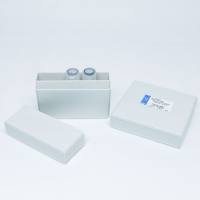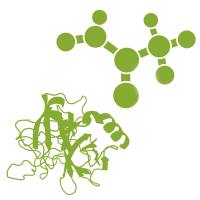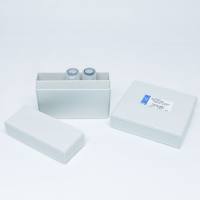Design and Preparation of Sequence-Specific RNase P Ribozymes
互联网
2428
The catalytic RNA subunit of Escherichia coli RNase P (M1 RNA) is a structure-specific endonuclease that cleaves pre-tRNA substrates in trans . By combining catalytic and substrate RNAs in one RNA molecule, self-cleaving ribozymes have been created ( 1 – 3 ). These constructs were converted to sequence-specific endonucleases by deleting 5′-segments of the tethered tRNA ( 1 ) ( see Fig. 1 ). It has also been shown that by linking a guide sequence to the 3′-end of the M1 RNA, a sequence-specific ribozyme could be designed ( 2 ) ( see Fig. 2 ).
Fig. 1. Design of sequence specific Endo.P-based RNase P ribozymes. Arrows denote sites of cleavage within the exogenous substrate RNAs. The underlined sequences denote the positions of the forward and reverse primers for the PCR. Endo P3 RNA 1s a theoretical approach and has not been checked experimentally.
Fig. 2. Design of a sequence specific M1GS-based RNase P ribozyme. The arrow denotes the site of cleavage within the exogenous RNA substrate. The underlined sequences denote the sites for the forward and reverse primers for the PCR. The internal guide sequence is indicated by a series of nucleotides (N), complementary to the cleaved target sequence ( see also Note 3 ).
Similar to Endo.P1 RNA, the internal guide sequence forms the 3′-half of a 7 bp acceptor stem, but in this case, no full-size tRNA structure is present (compare ref. 1 with ref. 2 ).









